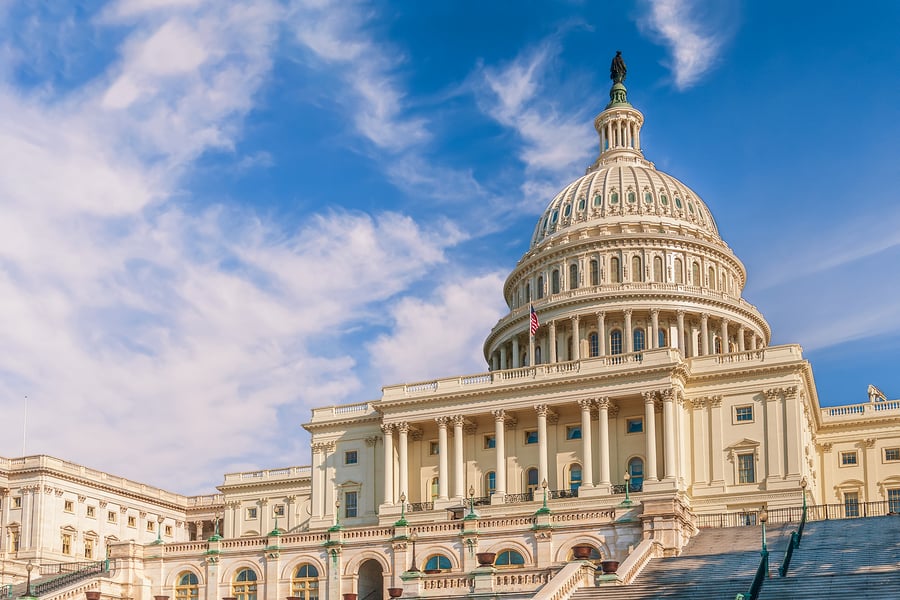Biden Targets Domestic Refineries As China Outpaces U.S.
A new threat to U.S. refining may be looming. A proposed Environmental Protection Agency (EPA) rule on hydrofluoric-acid-based alkylation could spur a round of refinery closures as the cost of replacing hydrofluoric acid based alkylation with alternatives is extremely high. EPA is considering adding amendments to its Risk Management Program (RMP) regulation that could effectively eliminate the use of hydrofluoric acid at U.S. refineries to make cleaner gasoline. Finalization of the rule would result in a loss of U.S. alkylation capacity that would reduce supplies of gasoline and aviation fuel, resulting in higher fuel prices for consumers. It could also shutter some refineries and impact U.S. energy and economic security. EPA’s proposed rule appears to be the result of an explosion that occurred 8 years ago at a refinery in Torrance, California, whose hydrofluoric alkylation unit has been operating reliably and safely for more than 60 years.
Background
Alkylate is a blend stock that represents about 15 percent of the U.S. gasoline pool and provides high octane, low volatility and low sulfur content to refinery output. Refineries use one of two primary catalysts in the production of alkylate: hydrofluoric acid, or HF, and sulfuric acid, or H2SO4. Because the two catalyst technologies represent different considerations for facilities, the decision of which to use is made in the design phase for each refinery, making it extremely difficult to substitute technology. Today, HF and sulfuric acid technologies each represent about half of domestic alkylation capacity, but the shares vary significantly on a regional basis.
The EPA has proposed that refiners using the HF-based process be required to undertake extensive evaluations of potentially safer alternative technologies. While the rule does not explicitly require refineries to replace and shut down HF alkylate units, refiners employing HF as a catalyst for producing alkylate are concerned that the rule’s mandated evaluations may require replacing its alkylate unit or shutting down completely. As the cost of shifting from HF alkylation to another alkylate production process is very high–into the hundreds of million dollars per unit–, the proposed rule is likely to result in more refinery closures, leaving the United States with even less refining capacity to meet consumer needs, where it is already stretched very thin.
A study of replacing an HF unit with a sulfuric acid alkylation unit at a Southern California refinery found that the replacement would require a much larger alkylate unit because more sulfuric catalyst is required to produce the same volume of alkylate as an HF unit along with a new sulfuric acid regeneration unit that is not required for HF alkylation. The cost would approach $1 billion—significantly more than what the facility was valued at in its last sale. The study also found that a regional loss of alkylate production and the resulting need to import alkylate would add an additional 26 cents to the price of finished gasoline for Southern California consumers; that is, on top of the state’s exceedingly high gasoline prices—the highest in the country. California refiners must have alkylate because there is no way to meet California’s demand for reformulated gasoline without it.
A recent analysis found that replacing all U.S. HF alkylation units would cost a $12 billion to $19 billion. HF alkylation refineries currently support more than 447,000 jobs and contribute directly and indirectly more than $119 billion to the U.S. economy.
If the United States lost half its alkylation capacity because of EPA’s rules, the United States could not by itself immediately make up the difference in alkylate production. Sulfuric acid alkylation units are running at high capacity already and cannot double their output to make up for lost alkylate from HF units. United States gasoline production would be severely curtailed and would have to be replaced by imports that could result in a national security issue as China overtook the United States in refining capacity last year. Currently, China’s refining capacity stands at more than 18.29 million barrels per day, while U.S. refining capacity is 18.06 million barrels per day. The rule would also pose a particular challenge for California gasoline since very few refineries outside California are able to produce the boutique fuel that the state requires.
Conclusion
Today, about 90 percent of U.S. refiners have alkylation units that produce alkylate–a critically important part of the U.S. gasoline pool. EPA’s proposed regulation on HF alkylate units could have a very detrimental effect on the U.S. refinery industry and hence U.S. consumers who require gasoline and aviation fuel. The cost to convert alkylate technology is considerable and studies have suggested many refineries would not be able to afford the change and would idle their units instead, a potential precursor for facility shutdowns since many would not be viable without operable alkylate units.
Any loss of U.S. alkylate production and potential loss of U.S. refining capacity from EPA’s rule on the use of HF would likely result in more expensive gasoline and aviation fuel, amongst already tight supplies. That could make the United States an importer of either alkylates or finished petroleum products, having a potential to impact U.S. energy and economic security. With the geopolitical situation in the Ukraine and Middle East, that outcome would be unfortunate, especially since President Biden has already brought our emergency reserve of oil to a 40 year low, and is extremely slow at refilling it.
*This article was adapted from content originally published by the Institute for Energy Research.


